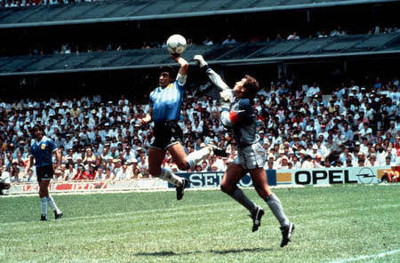
In a perfect world, footballers would be honest about everything that happens during a game. When the ball goes out for a throw-in they wouldn’t appeal for it if they knew it was them that touched it last. If a defender successfully tackled a striker, said striker wouldn’t then hit the deck as if they’d been shot. If players made a bad tackle on a member of the other team, regardless of whether they intended to or not, they would walk off the pitch without needing to be told to go. In short, there would be no need for referees and their assistants. Yet, unfortunately, we don’t live in a perfect world. Instead, with each league position being worth huge amounts of money in virtually every division in world football, players will do anything they can to give their team an advantage. Referees have their work cut out if they’re hoping to be able to keep an eye on what footballers are up to during a game.
There have been numerous attempts to help said referees out over the years. The introduction of linesmen, now called assistant referees, is a good example of this. They weren’t brought into football until the 1898-1899 season and even then it was only for ‘important games’. Further developments over the years saw the addition of a fourth official to help with administrative duties, with additional assistant referees added behind the goal line in certain competitions ahead of the 2009–10 season. The problem is that the game is now faster than ever. Incidents can take place all over the pitch, sometimes with more than one occurring at the same time. It was surely only a matter of time until technology was introduced to the world of football, given that it was already in play in most other major sports. Goal line technology was a first step, informing a referee whether or not the ball had completely crossed the line, but many felt that that still wasn’t enough. That’s what prompted the introduction of a Video Assistant Referee, or VAR. On this page we’ll be looking at why it came about, how it’s used and what might become of it in the future.
Why Was VAR Introduced?
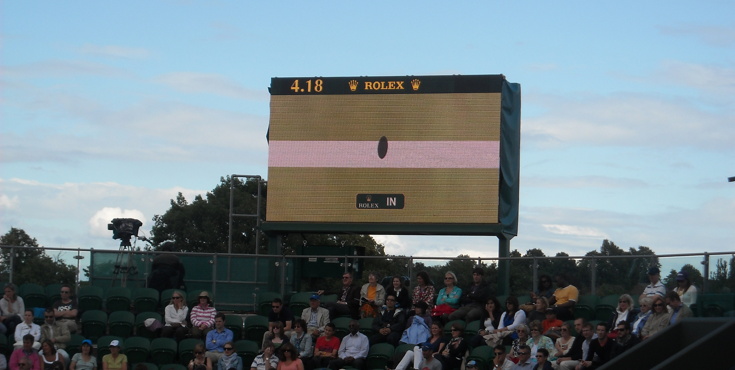
One of the key questions during any conversation about Video Assistant Refereeing involves asking why it was introduced in the first place. The problem is that there isn’t necessarily a definitive answer that. In fact, there is a decent chunk of football supporters who still feel that it shouldn’t have been introduced, but we’ll discuss the controversy around the subject later. Instead it’s worth looking at things that have happened in the past that might have been dealt with had VAR existed at the time. One of the most obvious examples is the infamous ‘Hand of God’ goal scored by Diego Maradona in the Argentina versus England quarter-final of the 1986 World Cup (see top image). Coming after fifty-one minutes, the Argentinian forward jumped up for the ball with England’s goalkeeper, Peter Shilton, and used his hand to knock it past him. England’s players protested but the goal stood and the Argentines went on to win the match 2-1.
Though the goal is now iconic, it obviously should never have been allowed to stand. That was a very talented England side that, had it been disallowed, could well have gone on to win its first major trophy since 1966. The player tricked the officials and there was nothing that could be done about it. That might seem like an extreme example, but similar small scale incidents happen in matches across the world every single day. The simple fact is that referees are only human and they will miss certain incidents during a match. When football got to the point that it was such big business, it was inevitable that more and more would be done to help the officials out. In the past that hasn’t necessarily been easy, thanks in no small part to the lack of technological advancements to the point that it would be able to seamlessly fit into the game. That changed some years ago, though football remained strangely reticent to the idea of using technology.
It’s interesting that it took football so long to catch up with the times, though that’s a criticism that can levelled at the sport for many more reasons that just the use of technology. For example, women have been playing golf, tennis and taking part in the Olympics for decades, but women’s football is still nowhere near the same level as though other sports even now. One of the main reasons is that those at the top level of the game where concerned about how technology would be integrated, with the fear being that it would slow the game down too much. It’s one thing being informed immediately about something as binary as whether the ball has crossed the line or not, but it’s quite different to have to wait for an opinion that could be seen as debatable over an incident like a red card offence. Still, tennis first used Hawk-Eye back in 2006 (see image above), with cricket following on three years later. That it took nearly a decade for football to catch up with those other sports tells you a lot about the priorities of those in charge of the game.
How Does it Work?
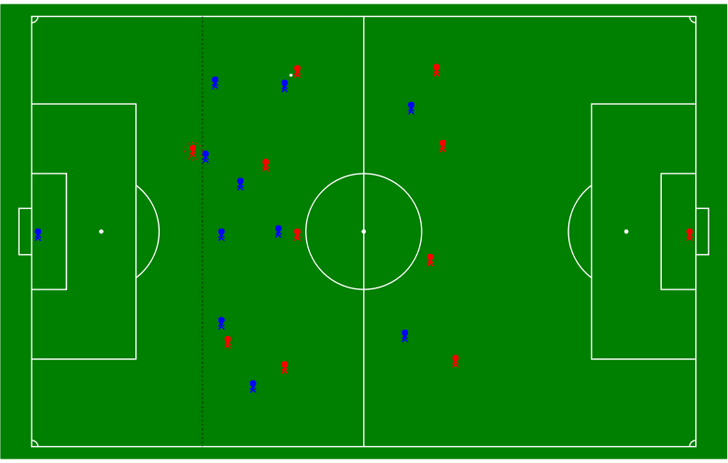
The International Football Association Board, which is the organisation that decides upon the rules of the game, has a very specific criteria for the use of technology in football, summed up by the phrase ‘minimum interference, maximum benefit’. They do not want games to be slowed down unnecessarily and so the Video Assistant Referee can be used to help in four types of scenario:
- Goals
- Penalty decisions
- Red card decisions
- Mistaken identity
Even within those scenarios there are some ways in which VAR cannot be used. Referees won’t be able to consult the Video Assistant Referee over second yellow card incidents, for example, so red cards may still be issued incorrectly. They can be used in the build-up to a goal, so if a foul is committed earlier in the move VAR can inform the referee that they should disallow the goal and reward said foul instead.
Perhaps we’re getting ahead of ourselves a little here, however. Initially it’s important to know the basics of how the system works. VAR is not a ‘thing’ it’s a person. Somewhere away from the ground where the match is being played, another referee will be watching the match play out on television. If an incident occurs then he or she can re-watch said incident closely in order to determine if there was a problem. The referee can ask for their assistance if they’re not sure what decision to make or, alternatively, the Video Assistant Referee can recommend that the referee ask for assistance. If the decision is a matter of opinion then the match referee can watch the incident back on a big screen monitor located in the ground in order to come up with a final decision, which is vital as they retain overall control.
If there is something that appears to be worthy of discussion then the Video Assistant Referee will watch the incident back enough times to get a clearer idea of what decision the match referee needs to come to. Once they’ve done that, or the match referee has watched the incident back on the monitor, the decision will be made and the game will continue. Technically only the captains of both teams should talk to the referee during this time, though the official can, of course, ask to speak to another player if he or she wishes. If a player tries to influence the referee into checking with VAR by drawing a rectangle with his fingers – which is the official signal – then they should be booked. The speed at which video footage will be played back to the VAR will depend on the incident, with ‘point of contact’ incidents such as a handball allowed to be slow motion but regular speed will be used for actions when the intention matters.
Pros And Cons
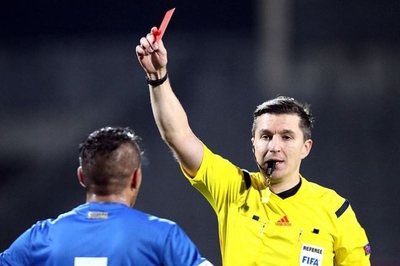
The Video Assistant Referee will unquestionably be useful for incidents in which the outcome is binary. Was a goal offside, for example, or did a tackle occur inside the penalty area and therefore a penalty should be awarded? In those instances, where the outcome is black and white, the use of the VAR system will be at its strongest.
Despite the vogue for commentators to refer to something as ‘only just offside’ or ‘on the edge of the area’, there are specific rules that dictate whether a player is offside or whether a foul should lead to a penalty. If any part of the attacking player that could score a legal goal is in an offside position then they are offside. If they are exactly alongside a defender then they are not. These decisions can be made reasonably quickly by a referee that knows the rules of the game.
When VAR is more likely to provoke controversy is when the call comes down to the referee’s opinion of an incident. Was a handball deliberate, say, or was it accidental? A referee watching it back might be able to get a clearer idea of the incident thanks to camera angles, but if something is not an absolute then it always likely to be debated by both sides.
The interesting thing regarding Video Assistant Referees is that they know the rules of the game and will be exactly up-to-date with what the International Football Association Board has decided the ruling on an incident should be. What has perhaps muddied the water over video replays over the years is commentators and pundits saying that something isn’t a penalty or foul in their eyes. That leads to the feeling that something is controversial when, in actual fact, the referee is applying the law of the game as it stands at the time of the incident.
Why Is Video Assistant Refereeing Controversial?
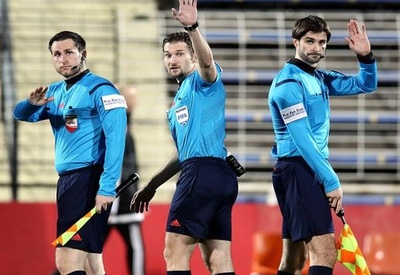
There are a number of reasons for why Video Assistant Refereeing has caused controversy since its introduction into football. For starters, we’ve just touched on the idea that sometimes incidents aren’t absolutely clear and a referee’s opinion on the matter comes into play. There have been incidents across the course of a weekend, let alone a season, when one referee has given a penalty for something that another referee has not. If you’re looking at occurrences that come down to opinion, what difference will a video replay offer? The answer, of course, is that the final decision ultimately rests with the match referee. If the VAR informs them that they should watch something back and they think their original decision was the correct one then it will stand.
Another criticism comes in the form of the use of VAR breaking up the ‘natural flow of the game’. There is some validity to this, with referees at times taking a few minutes to consult with VAR before making a decision. Yet there have been countless occasions with a Video Assistant Referee when players have crowded around a match official in order to attempt to influence their decision on a major incident. Should a penalty have been given? Does a player deserve to be shown a red card? Was a goal offside? In those instances the use of VAR would likely have helped the referee come to a decision much quicker than they were able to with players crowded around them. It’s also worth noting that the use of the Video Assistant Referee will help the person in charge of the game come to the correct conclusion over an incident more often than not, so shouldn’t that be taken into account?
Perhaps the fairest criticism of the VAR system is the fact that supporters in the ground don’t always know what’s happening. In the past, referees have touched their ear to listen to instruction without letting the crowd inside the stadium know what they’re up to. That is likely to change in the future, with big screens becoming compulsory in order for information to be broadcast to those not watching the game at home on their televisions. There’s also the possibility that the conversation between the match official and the Video Assistant Referee could be broadcast over a stadium’s Public Address system, in order to ensure that watching supporters in the ground know exactly what’s happening and what the thought-process of the officials has been. Without those things taking place, however, people inside a stadium are left having to guess at why the game has been stopped and how the referee reached their final decision.
One of the most bizarre criticisms of the introduction of the VAR system is that it ‘takes the game further away from the grass roots’. The notion here is that a game in a park on a Sunday afternoon couldn’t use video replays, so should they be used in a top-flight game? The problem with that point of attack is that the professional game is already light years ahead of matches played in a Sunday League format. Referees have radio contact with their assistants, for example, so should that be stopped? Players have access to nutritionists and fitness experts that a pub team don’t have, yet there are no calls to ban those. There are many things that separate what top-flight teams have available to them compared to their grass-roots equivalents and people should be up-in-arms over many other disparities before VAR even gets on the agenda.
Video Assistant Refereeing will never be perfect and there will always be instances that critics will be able to point to and say that it ‘doesn’t work’. Yet the reality is that if it is done properly it could be integrated into the game reasonably seamlessly and will help match officials get decisions correct more often than not. Technology has been introduced into virtually every other major sport and has had a positive impact, with the only reason it might not have the same effect in football being the reluctance of the more old-fashioned fans of the game to embrace it. Controversial decisions are focussed in on by television broadcasters and supporters alike after games, so the introduction of VAR will allow referees to have the same ability to watch things back as everyone else.
The Future Of VAR
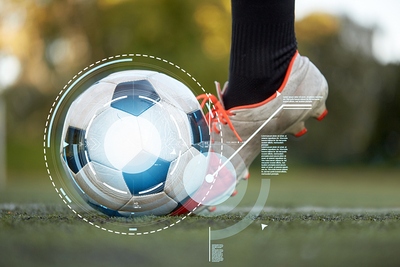 Whether supporters like it or not, Video Assistant Refereeing is being introduced to the world of football. At the moment that results in murmurs of discontent from some quarters, but football has always had the ability to move with the times. When the back pass rule was introduced there was the same feeling of the game being ‘ruined’ by officiating, much as there was when goal line technology came along. In both instances football coped and fans moved on, with the majority accepting that the changes were for the better. The future of VAR as an idea will mostly involve the refereeing community finding ways to adapt to how it works, with players more likely to reduce the amount of misbehaviour that they engage in on the pitch. After all, if they know that they’ll almost certainly be spotted committing a handball or a red card offence then surely the number of times that they do it will drop.
Whether supporters like it or not, Video Assistant Refereeing is being introduced to the world of football. At the moment that results in murmurs of discontent from some quarters, but football has always had the ability to move with the times. When the back pass rule was introduced there was the same feeling of the game being ‘ruined’ by officiating, much as there was when goal line technology came along. In both instances football coped and fans moved on, with the majority accepting that the changes were for the better. The future of VAR as an idea will mostly involve the refereeing community finding ways to adapt to how it works, with players more likely to reduce the amount of misbehaviour that they engage in on the pitch. After all, if they know that they’ll almost certainly be spotted committing a handball or a red card offence then surely the number of times that they do it will drop.
The good news for the critics of the system is that technology is only going to get better. With every passing year, the way that Video Assistant Referees can be integrated into the game will improve immeasurably. We already have smartwatches that allow people to receive text messages or phone calls on their wrist, so how long will it be before the referee is able to watch an incident back on their watch? The possibility of the video replay being moved into a pair of smart glasses at some point doesn’t seem overly preposterous. The International Football Association Board’s saying of ‘minimum interference, maximum benefit’ is something that should be taken to heart by all parties, with the VAR system aiding referees in their decision making as much as possible whilst not taking over the game. The future of football as far as technology is concerned is surely likely to be an exciting one.
